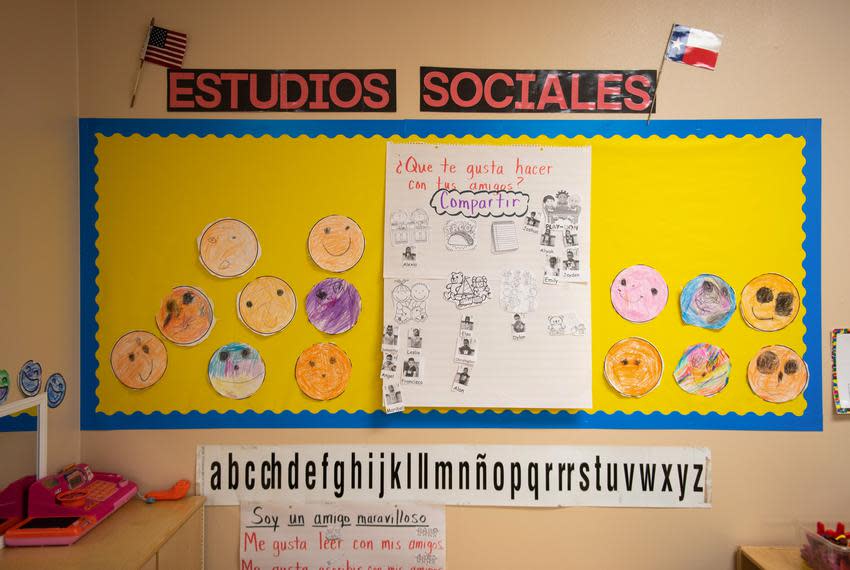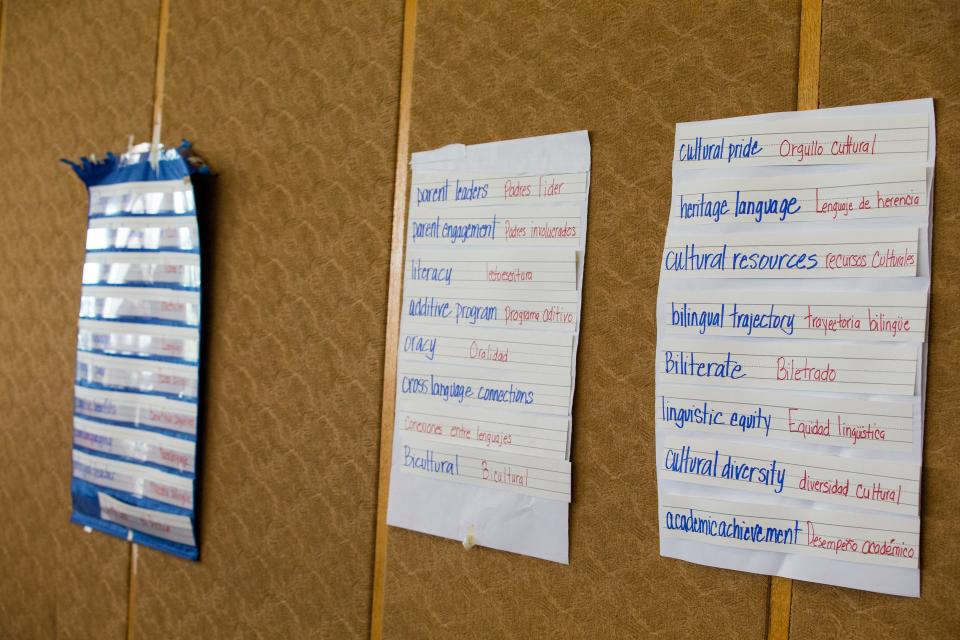Community members speak out against Corpus Christi ISD's new bilingual program
Editor's note: This article has been updated to correctly state which attendees of the meeting asked questions about teacher recruitment and teacher pay and to note that Zonia Lopez, CCISD's director for special programs, did not discuss details of dual language programs during the meeting.
Concerned members of the public on Thursday questioned Corpus Christi ISD officials about changes to the district's bilingual program and what leaders have done to combat a shortage of bilingual teachers.
About a dozen parents, some with their children, attended a meeting on the revamped program at Galvan Elementary.
Because the district does not have enough bilingual teachers for every elementary campus, the bilingual teachers will be consolidated at fewer schools under the new plan.
Those schools are Allen, Berlanga, Calk-Wilson, Cullen Place, Dawson, Galvan, Garcia, Gibson, Hicks, Los Encinos, Metro E, Mireles, Moore, Oak Park, Shaw, Smith, Windsor Park, Creekside and Zavala elementary schools, as well as the Early Childhood Development Center.
Zonia Lopez, the district's director for special programs, said the district chose to consolidate some campuses after researching other bilingual models across Texas.
The meeting at times became tense as attendees hurled several questions in English and Spanish at Lopez and bilingual specialist Reyna Martinez-Arriaga.
Community members asked if the district has reached out to universities for help with teacher recruitment, what the starting salary is for bilingual teachers and if CCISD has tried to recruit teachers from the Rio Grande Valley.

Lopez said that although she was told three future teachers are graduating from Texas A&M University-Corpus Christi this year, they are not required to have a bilingual certificate.
The district's salary is comparable to that of surrounding districts, Lopez said, and stipends for bilingual teachers increased by $1,000 this school year.
As for recruitment, Lopez said the school district can't make people relocate, but it has reached out to the southern area.
"But after working with the district for a year, they resign and move back home," Lopez said to a concerned parent.
Lopez said the district is considering reaching out to the University of Texas at San Antonio in the future.
Early exit vs. dual language
The program is an early-exit model, which serves students of limited English proficiency by transferring them to an English-only instruction class between two and five years after they enroll in school.
Lourdes Huerta, a first grade bilingual teacher at Allen Elementary, urged the district to consider a dual language program. That type of program is open to native English speakers and English learners, with the goal to produce bilingual and biliterate students.
Huerta said the district is not embracing bilingualism and that the community lacks bilingual workers across a range of fields.
"If we're moving all these bilingual teachers here, why not start dual language here?" Huerta said during the meeting. "Since we will have all of them here, this is the perfect opportunity."

Lopez and Martinez-Arriaga, with the latter translating in Spanish, said research indicated children who participate in a bilingual education program build on literacy in Spanish to acquire stronger cognitive and academic skills in English. Lopez said students are more likely to develop a bicultural identity and become biliterate.
Huerta said she disagrees.
"These early-exit programs have us teach students English as quickly as possible and then push them out and they're good to go," Huerta said.
She cited research that shows students in dual language programs become more successful than their peers. The programs have been proven to reduce dropout rates and increase attendance rates among Latinos because kids feel their culture is embraced, she said.
'It's not right'
Leslie Soto has a son in first grade at Yeager Elementary. She said she was unhappy about how the district notified parents of the new plan.
"The district is handling this really badly," Soto said. "All they did was just send us a letter saying the program was changing and my son has to go to another school. It's not right."
Huerta, a former CCISD student who returned to her hometown after teaching in Austin for six years, said the district lacks a sense of community.
"I decided I wanted to move back home because I love my community and we have a beautiful culture here," Huerta said. "I was thinking, 'Why am I teaching in this privileged classroom with students who mostly don't speak Spanish? I have my hometown where kids need me.'"
RELATED COVERAGE
More: Corpus Christi ISD announces changes to bilingual program
More: Community leaders call halted CCISD plan to move bilingual students 'discrimination'
John Oliva covers entertainment and community news in South Texas. Contact him at john.oliva@caller.com or Twitter @johnpoliva.
Consider supporting local journalism with a subscription to the Caller-Times.
This article originally appeared on Corpus Christi Caller Times: Community members speak out against Corpus Christi ISD's new bilingual program

